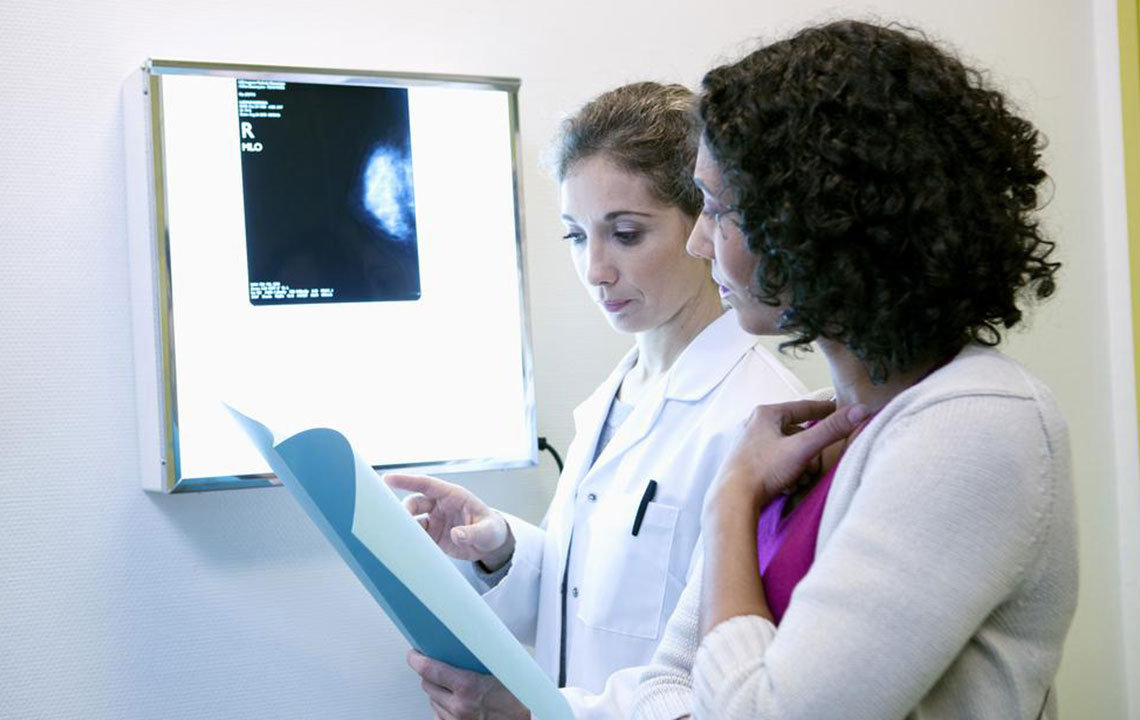All You Need to Know about HER2-positive Breast Cancer
A protein receptor in our body, also called the human epidermal growth factor receptor 2, controls the cells’ ability to grow, divide, or repair itself. However, when there is something wrong in the gene that is responsible for HER2 protein, the body starts creating too many receptors. This causes excess production of the breast cells, creating a tumor. Although this is one of the most aggressive types of breast cancers, it can be treated.
The most common symptom for any breast cancer is a lump in the breast. Similarly, HER2 breast cancer causes different signs and symptoms like swelling of the breasts, change in the shape, skin irritation or dimpling, and pain in the nipple or breasts.

Diagnosis of HER2-positive breast cancer
Diagnosis for any breast cancer is the same except when the doctors suspect it to be HER2-positive. To confirm this, the doctors run three different tests: IHC test, FISH test, and SPOT-Light HER2 CISH along with the Inform HER2 Dun ISH tests.
- IHC test
Short for ImmunoHistoChemistry, this test uses some specific antibodies that can detect HER2 protein from the sample of breast cancer tissues. When there is an excess of the protein in the sample, it changes its color.
The FISH test is short for fluorescence in situ hybridization, which is a test that maps the genetic material in the cells. It tests the breast cancer tissue for extra copies of the HER2 gene; if there are more copies, it indicates that there are more copies of HER2 receptors that receive signals that stimulate the growth of breast cancer cells.
These include coloring HER2 genes in a tissue sample and counting them under a microscope.
Treatments for the cancer
HER2-positive breast cancer treatments mostly include chemotherapy, radiation, surgery, targeted therapy, hormone therapy, clinical trial, and self-care.
Chemotherapy
Chemotherapy is given before surgery to shrink the tumor and post-surgery to kill the remaining cancer cells. Chemotherapy is often combined with other medications.
Radiation
Radiation is usually a post-surgery treatment procedure that further lowers the chances of a relapse. Radiation also works for cases where cancer has spread to other body parts. In that case, there are two types of radiotherapy: external beam radiation and brachytherapy.
- External beam radiation
This treatment involves a machine that directs radiation to the area where cancer had begun. - Brachytherapy
Here, doctors use a device to insert radioactive pallets inside the body for short periods of time.
Surgery
This treatment is chosen when the stage of the cancer is between I and III. There are two kinds of surgery— Lumpectomy and Mastectomy. Lumpectomy is another term for breast-conserving surgery that includes the removal of only the tumor along with some surrounding tissue. Mastectomy, on the other hand, includes the removal of the entire breast.
There are other surgeries like sentinel lymph node biopsy and axillary lymph node dissection. In sentinel lymph node, the surgeon removes the lymph node(s) from the underarm region as the cancer is likely to spread there. Axillary lymph node dissection includes the removal of many lymph nodes from the underarm region.
Targeted therapy
Doctors often start the HER2 treatment with a special medication known as the targeted therapies. The medication blocks HER2 receptors and prevents cancer cells from growing. Patients often have to continue their targeted therapy for over a year as it decreases the chances of the disease from relapsing.
Hormone therapy
If the cancer is also a hormone receptor-positive, doctors may suggest hormone therapy. Here, the patient needs to take medication to stop estrogen from attaching to cancer.
Clinical trials
Although clinical trials are not treatment procedures, it is tested for safety and efficiency. Clinical trials have their pros and cons where patients get regular medical care and even an effective new treatment, that could also be a placebo (no treatment at all). As clinical trials are not a traditional treatment approach, patients must ask their doctor about the predicted results and if this option will help them.
Self-care
Getting treatments for breast cancer can be overwhelming, but patients do have the power to choose their treatment plan. They also can make a difference in their treatment by doing their bit, which is self-care. Self-care involves taking good care of one’s health and eating right to stay nourished.
Getting the right support and seeking practical help can benefit the patient in their journey through the treatment.

